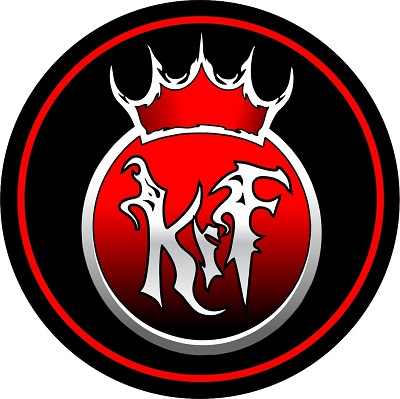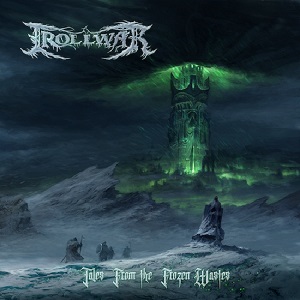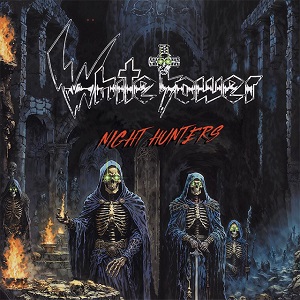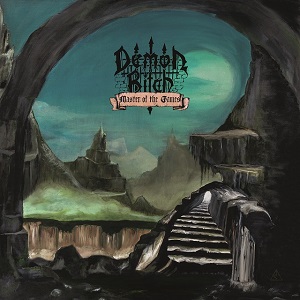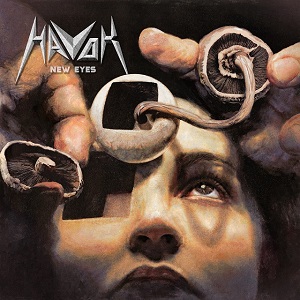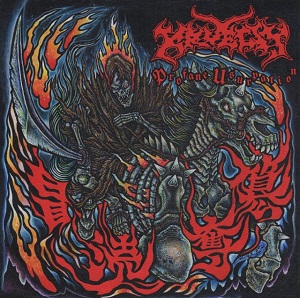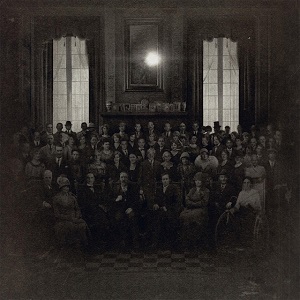10 Hard Rock Songs That Were Made Up On The Spot
January 17, 2023, a year ago

Sometimes writing a song tends to feel like pulling teeth. Even though you might try every single strategy, it can take years before you finally find an arrangement for a song that you’re happy with. If you capture that magic moment though, sometimes some of the best songs in the world can happen purely by accident. While not every one of these songs were necessarily planned out, the energy in the room was better than anything these bands could have put thought into, letting the music carry them and finding their muse in between jam sessions.
Though some of these might have seemed like throwaway tracks at the time, they became staples once they hit the road, turning into classics later down the line. There’s no real rhyme or reason why some songs succeed like this, but when you’re in the midst of writing a classic, sometimes it’s best not to question it and go where the music takes you.
“Paranoid” - Black Sabbath
Most of Black Sabbath’s hits aren’t for the impatient. Although everything comes back to Tony Iommi’s guitar riffs, classics like Iron Man and their namesake track take their time to sprawl out, with some of the best material eclipsing the 8 minute mark in some places. When the band were cutting their second album, they ended up being one song short. Since the band was known for playing longer tracks, they still had to fill up 2 minutes on the record and were told to just jam something to make a decent filler track. Evidently Iommi doesn’t understand the meaning of the term ‘filler,’ working right through his lunch break and coming up with the beginning riff of “Paranoid”.
When the rest of the band came back, they almost couldn’t record it fast enough, with Bill Ward saying that he was scrambling to find his sticks so they could lay it down properly. While the song does end up clocking in at just over 2 minutes, the same Sabbath darkness is still accounted for, with Geezer Butler writing about his different bouts of depression that he was experiencing around this time. Without really thinking much of it, this became the cornerstone of the entire record, turning into the biggest hit from the record and turning Sabbath into one of the most successful hard rock bands in the world. Not bad for a song that came together in an afternoon.
“The Unforgiven” - Metallica
After years of playing straight ahead thrash, Metallica needed a change of scenery in the ‘90s. Looking to strip down their songs, working with producer Bob Rock gave them some of the biggest hits of their career, bringing metal to the masses on songs like Enter Sandman. Though the Unforgiven was one of the many ballads that they worked with, the iconic solo took a little bit of coaxing out of Kirk Hammett. After putting together the perfect solo at home, Hammett was disappointed when everyone at the studio hated what he came up with. Not thinking that it would suit the song, Rock ended up pushing Hammett to his limit, saying that he needed to put in a lot more effort than what he had been doing at that point.
In the documentary on the making of the Black Album, you can hear Rock really lay into Hammett, asking him to impress him and calling everything that he had done up until that point just a warm up. Reaching the end of his rope, Hammett lashed out by shredding a solo off the top of his head, which ended up sounding perfect for “The Unforgiven”. Being a lot more bluesy than his other solos, this helped Hammett branch out into some of the blues-based playing that he would get into on the next albums like Load and ReLoad, for better or for worse. Rock might have looked like a jerk for winding Hammett up like that, but if this is what Hammett does under those conditions, maybe he should be pushed like that more often.
“Walk This Way” - Aerosmith
Some of the best rock and roll songs of all time begin at soundcheck. When you’re warming up your fingers and fiddling around with your knobs before you get going, sometimes a bit of magic falls out without even knowing it. And when Joe Perry was getting his amp together before an Aerosmith show, he came up with the juiciest riff of his career. While it’s hard to think of Aerosmith without the lick from “Walk This Way”, Perry originally thought it should have been a little funkier, looking to have the same style that the Meters had captured on their first records. Once Steven Tyler got behind the drum kit, they started to get the basis of the song together.
Although Tyler had some trouble coming up with lyrics in the studio, he found the right cadence when the band took a break to catch a screening of Young Frankenstein. Being inspired by the hunchback’s iconic line ‘walk this way,’ Tyler was off on the story, talking about a girl he met in high school that took him for a different kind of ride. Given the high energy of the tune and Joe Perry’s amazing licks, it’s no wonder that this was the tune that Run-DMC eventually collaborated with Aerosmith on. Regardless of what genre you fit into, it should always come back to the groove, and that’s what “Walk This Way” is all about.
“YYZ” - Rush
Traveling is a natural part of any musicians’ life. When living the life of a rock star, your life consists of going from one hotel room to the next, playing a concert in cities around the world and eventually seeing life through the window of an airplane. Plenty of songs have been made about the traveling experience, but Rush took coming home quite literally on “YYZ”. Taken from the Morse code from their native Toronto airport, this instrumental began its life as a jam session that Neil Peart and Geddy Lee started before Alex Lifeson turned up at the studio. Using the Morse code as the initial beat, the entire song simulates a travel sequence, giving you the hustle and bustle feeling that comes with walking through the airport.
While Lifeson’s licks take up prime real estate on this song, this is still a drum and bass extravaganza, including a section of the tune where everything drops out for the drum and bass to have their own featured solos. Once Lifeson’s guitar comes soaring in, it’s almost as if you’re taking flight right along with him, seeing the world from the sky before bringing things back down to the Earth for the final instrumental sections. While this was never meant to be played on the radio by any stretch, this is the most pure rock and roll experience that Rush can get. It might not have any lyrics to sing along to, but you don’t need words when you have melodies that are this compact.
“Rock And Roll” - Led Zeppelin
When you’re in the studio, almost any new idea tends to sound good. Even though Led Zeppelin had enough material lying around for Led Zeppelin II, some of the sessions evolved into jams, starting with one song and then segueing into something completely different. And when John Bonham got done tracking the song “Four Sticks”, he had something a little more raucous to let loose. Kicking off with the opening drum groove from Little Richard’s “Keep A Knocking”, the band launched into a traditional rock and roll tune, with Robert Plant riffing on traditional rock tropes about walking in the moonlight as tape rolled.
While this was never meant to be its own track, the feeling of the song encapsulated everything that made Led Zeppelin a force to be reckoned with. Outside of the amazing lick from Jimmy Page, the chemistry between the band is the real star here, from Bonham playing slightly behind the beat to Page’s licks almost sounding too fast for their own good. While most records have a certain sound to them, this is a song you can practically see getting made in the studio, as every band member goes for broke and lets loose behind their instruments. It almost sounds like the song could fall apart at any time, but Zeppelin knows that it’s those moments that make for some of the best rock and roll.
“Killing In The Name” - Rage Against The Machine
Every rock guitar player is going to find something to stand out from the rest. Even though it’s easy to take the Eddie Van Halen method of playing as fast as possible, Tom Morello was looking to leave his sonic fingerprint whenever he picked up a guitar. And when he discovered drop-D tuning, he turned in one of the greatest riffs of the ‘90s. After taking up a side gig of teaching young guitarists, Morello was showing one of his students how drop-D tuning works and began jamming on what would become the riff to “Killing In The Name”. Not wanting to get in the way of inspiration, Morello cut the session short just so he could record the song onto his tape recorder, knowing that it had the power that he was looking for in Rage Against The Machine.
Once the other members of Rage got together, much of their early work was composed of Morello’s original sketches, with the lick of “Killing In The Name” getting prime time on the final version of their debut record. Although the force of this song might hit like a sledgehammer, Morello has said that he thinks the track has much more in common with the likes of James Brown than anything remotely metal. There’s definitely a funky edge that comes from the entire band grooving on one riff, but this is what James Brown would have sounded like if he were fronting Black Sabbath.
“Live Wire” - Mötley Crüe
Every single aspect of Mötley Crüe’s sound normally begins in the mind of Nikki Sixx. As much as the band loved to party, Nikki was looking at the big picture and was keen to have anything that would send them to the top. While he may have penned some of their greatest material, it took every band member to create “Live Wire” at their first rehearsal. While Sixx had the basis of the song already nailed down on his bass, he admits that it wouldn’t have been half as good as it became without the rest of the band working on it. Having more of a punk rock edge, Mick Mars doesn’t let up for a minute on here, as Tommy Lee’s relentless sense of rhythm gives the band the right kind of push.
And although the band might get the credit for the lyrics, Lee credits Vince Neil joining the band as the moment where everything clicked for them, saying that Mötley Crüe didn’t really happen until every one of them started to play this song in the rehearsal room. Since this was before hair metal began in earnest, this is a good snapshot of the Crüe coming into their own, being equal parts KISS, The Sex Pistols, and Led Zeppelin blended into one chaotic band. The Sunset Strip may have already been a hotbed for young talent, but once Crüe had this song in their arsenal, they had the rest of the world at their feet.
“Pour Some Sugar On Me” - Def Leppard
Towards the end of 1986, Def Leppard were coming to the end of their rope. In an effort to top what they had made on Pyromania, they had spent millions of dollars on Hysteria and were counting on selling millions of records just to break even from what they originally made. After Rick Allen’s horrific car crash and hours of studio time playing their songs, the band’s greatest cut came at the 11th hour. During the sessions for the final song, Joe Elliott walked into the control room while on a coffee break and started strumming on an acoustic guitar. Liking what he was hearing, producer Mutt Lange was convinced that they needed to chase that song down as quickly as possible, following the chorus line ‘pour some sugar on me.’
Although the entire album took years to come together, “Sugar” became one of the easiest sessions they ever had, recording it over just a few days and throwing together lyrics with every kind of innuendo Elliott could think of. It ended up being worth the wait, with the record originally stalling until this song got airplay on pop radio, turning Def Leppard into one of the biggest names in rock and roll and leading to them holding performances in massive arenas. Moral of the story: never underestimate the power of a couple of hours and a good idea.
“Smoke On The Water” - Deep Purple
If everything had gone according to plan, there’s a good chance we would have never heard Smoke on The Water. Looking to break out of the studio environment, Deep Purple originally had the plan to record in a live casino in Switzerland, and decided to catch a Frank Zappa gig before they put all of their gear in. Then everything went up in smoke. After someone shot off a flare gun in the building, the entire casino turned into an inferno.
While no one was injured too badly, Purple were in need of a recording venue, and ended up renting out the Rolling Stones’ mobile studio to work on Machine Head. Inspired by their bad luck, Ritchie Blackmore came up with a riff on the spur of the moment, which became the basis for Smoke on the Water. Having an entire story at their feet, Ian Gillan’s lyrics are one long report of what happened to them in Montreux, mentioning the owner Claude Knobs as ‘Funky Claude’ and how they eventually ended up recording in the mobile studio. Even when they were out of the firing line, they still ran into trouble, with the final take of what would become the classic almost getting derailed when police came banging on their door to let them know they would need to turn down after keeping the entire town awake late at night. There were so many pieces that weren’t working in this song’s favor, but sometimes rock classics just will themselves into existence.
“Eruption” - Van Halen
Anyone who’s even remotely into rock and roll guitar needs to study the work of Eddie Van Halen. From the minute that the needle hit the vinyl of Van Halen I, Eddie was ready to teach a clinic on guitar mastery, perfecting his tapping techniques across nearly every track. Considering how many classic Van Halen songs have his signature technique, the one track everyone worships from Van Halen happened purely by accident. Though Eddie had the beginnings of what would become “Eruption”, he was hesitant to record it, thinking that it worked more as a live staple rather than a studio cut. Producer Ted Templeman had a different idea though, going to see the band play live one night in West Hollywood and recording this version of the song while Eddie was warming up during soundcheck.
Even years after the fact, Eddie mentioned not being as pleased with the final results, saying that there were a few bum notes in the mix and that the track didn’t really come together until they went out on the road and played it live a little bit more. It would be hard to tell what he was doing live though, with David Lee Roth instructing Eddie to turn his back to the crowd so that no one could see what he was doing. Although Eddie refined his approach further on in Van Halen, this is the first witness of the monster that was about to take over rock and roll.

